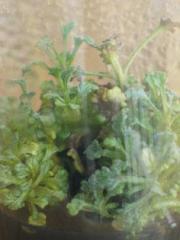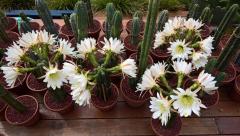Leaderboard
Popular Content
Showing content with the highest reputation on 03/20/2018 in all areas
-
From the album: Sydney garden
A couple of months ago some creature, probably a possum, maybe a cat, attacked one of my San Pedro and ripped of its 3 small pups. I put them in dry perlite, and they've all rooted now! This is the smallest of the 3 detached pups. Has anyone ever rooted their pups this small before?5 points -
From the album: Trichocereus Freaks
Trichocereus bridgesii pure species yellow4 points -
4 points
-
4 points
-
Life was throwing me challenges, my best friend Milly (my dog) dying, my life going nowhere. I'd lost passion, projects not working, life going downhill. I turned to passionflower. Here's the journey and some science. It turned into three days on high dose ad libitum Passiflora incarnata. Chewed through a few hundred grams exploring it. Then got gifted some P. capsularis I'll explore more ceremonially. Note Passiflora contain cyanogenic glycosides at times. Brew appropriately/cautiously to stay safe. Passiflora is used for Finding the Spiritual Learning in Difficult Times. Attuning to Christ Consciousness. It helps us understand the deepest possible meaning of our own personal suffering, after which it assists in the ascent to our truest calling of service on the planet. It is useful in strengthening one’s connection to selfless service and unconditional love Going to brew up a Passionflower dose today, should keep me going. I tried low doses and never got much, going to push it a bit after my social therapy in the city today. The genus Passiflora is popularly used to treat a variety of ailments. predominately anxiety. Passiflora incarnata is an important plant used in Ayurveda for the treatment of various disorders of the CNS and is a rich source of flavonoids (flavonoid content ~2.5%). It contains indole alkaloids (harmalol, harmol, harmane, harmaline and harmine) and flavonoids like orientin, isoorientin, vitexin, and isovitexin in the aerial parts. The recommended daily dosage of dried passion flower is 4-8 grams, some suggest starting at 2g. P. edulis (edulis and flavicarpa) also show anti-depressant and anxiolytic activity, containing O-flavonoids, C-flavonoids, cyanogenic glycosides and fatty acids. Harman type alkaloids found in P. incarnata were not detected in P. edulis. Passiflora edulis 'flavicarpa' (yellow fruit) is extremely different from Passiflora edulis 'edulis' (purple fruit). The six major flavonoid compounds isolated from the leaves of Passiflora edulis 'flavicarpa', lucenin-2, vicenin-2, isoorientin, isovitexin, luteolin-6-C-chinovoside, and luteolin-6-C-fucoside, had not been detected in Passiflora edulis 'edulis'. It is clear this plant shows considerable qualitative and quantitative variability with respect to its content. With P. incarnata, following oral administration at high dose, the extract exerted an anxiolytic effect that was comparable to diazepam and mediated by the GABAergic system. Findings suggest that the consumption of a low dose of Passiflora incarnata, in the form of tea, yields short-term subjective sleep benefits for healthy adults with mild fluctuations in sleep quality. It positively modulates circadian rhythms by inducing high-amplitude rhythms in the expression of several circadian clock genes. P. incarnata flowers has significant antiparkinsonian and cognition enhancing activity Analysis of plant material cultivated in Australia revealed two chemically distinct groups of P. incarnata - distinct intraspecific chemotypes exist in this species. The two distinct groups differ with respect to their C-glycosyl flavone profile, with little within-group variation. One chemotype was dominated by isovitexin and schaftoside/isoschaftoside, as is most widely reported in the literature for this species. The other chemotype was characterized by a high level of swertisin, with low levels of schaftoside/isoschaftoside. Passiflora incarnata has long been used in traditional herbal medicine for the treatment of insomnia and anxiety in Europe, and it has been used as a sedative tea in North America. Furthermore, this plant has been used for analgesic, anti-spasmodic, anti-asthmatic, wormicidal and sedative purposes in Brazil; as a sedative and narcotic in Iraq; and for the treatment of disorders such as dysmenorrhoea, epilepsy, insomnia, neurosis and neuralgia in Turkey. In Poland, this plant has been used to treat hysteria and neurasthenia; in America, it has been used to treat diarrhoea, dysmenorrhoea, neuralgia, burns, haemorrhoids and insomnia. Passiflora incarnata has also been used to cure subjects affected by opiate dependence in India. Passiflora edulis 'flavicarpa' displayed anxiolytic activity at lower doses and sedative activity at high doses while Passiflora edulis 'edulis' exhibited sedative effects. P. edulis induces stronger anxiolytic-like effects compared to P. alata. ~~~ I'm two days into high dose passionflower with my other plants, mainly trying to calm and uplift the spirit, get some sleep and attune deeper to heart. I've pushed it quite a bit, started at 20g. While it's not suggested more is always better, I wanted to relate to this plant on a deeper level. Got up to quite a bit more today. I've tried typical medicinal doses and never regarded it as personally useful for such. Actually got a half-decent sleep last night. If I had to describe it at higher doses - it's starts living up to being anxiolytic, slightly hypnotic/sedative, spiritually attuning, anti-neurotic but with the ability to remain functional. I want to use it a bit more. Definitely feels nicely flavonoidy. I've been trying two lots, one's mainly organic leaf from an Australian grown plant, the other is very stem laden. Have to try and note some differences. It can be used for inducing heightened spiritual states, greater awareness, channeling and even peak experiences of a religious nature The Cherokee used Passiflora incarnata as a 'social drink' and in religious ceremonies. It has been used in 'love medicine', to calm the heart and spirit and in sacred ceremonies for those who had passed on. Accounts of spiritual use have been recorded from Druid texts, to Ayahuasca type ceremonial practices. Amazonian species of Passiflora are used as an additive to ayahuasca to intensify the visions experienced during ceremonial rituals. Maracuja (P. edulis) juice plays a significant role in Brazilian jurema rituals, which are similar to ayahuasca rituals, but which are not particularly well understood at this time Passionflower is used to bring peace to the soul. Passionflower is thought to transfer Christ properties and vibration of Christ consciousness. This term is not associated to religious practice - the plant supports the re-patterning of consciousness to attain wholeness again. It's known to repair the ego - mending it to the superego - supporting a feeling of enlightenment day to day mental constructs. I'm finding it's quite anti-neurotic - "The mandala-like flower demonstrates the powerful signature of its use in circular thinking, passionflower is especially suited for folks who have a hard time letting things go, mulling them over incessantly in a repetitive manner." "The plant was used in purely sacred or sacramental rituals. It was allowed to grow wherever there were ritualistic places where worship, understanding of God and Earth, and working with energy of a more spiritual nature was taking place. The Lemurians, as they saw these energies in their rituals become permeated into the various plants, felt the loving and joyous energies from passion flower and from its vines and roots. This created a resonance, so passion flower was often used to close ceremonies." I'm going more for flavonoid resonances. While it contains harmala alkaloids more recent analyses of commercial passionflower samples indicated that harmane content ranged from 0 to 0.1 ug/g and harmine ranged from 0 to 0.27 ug/g . Another analysis found the average harmine level in Passiflora caerulea was 0.098 mg/g. This is much higher level of harmala alkaloid as compared to the levels found in the Passiflora incarnata samples, P. incarnata had an average value of 0.031 mg/g harmol and an average of 0.00935 mg/g harmine.That said, the levels of the harmala alkaloids varied widely between samples of Passiflora incarnata and every analysis seems to be different, it is suggested that time of harvest, growing conditions and even chemotypes play a role. Some ayahuasca-type brews have been successful with 300g of material to inhibit MAO, to me that level of flavonoid effect would be very different. Abourashad et al report the harmala levels detected in 104 samples of Passiflora, and 50 of the samples had no detectable levels of harmala alkaloids. Cavin & Rodriguez state that harmala alkaloids frequently occur in such small concentrations that they have not been quantified, which may be a reason that their presence in species of Passiflora is at times disputed and not always reproducible. ~~~ Find passionflower at very high doses nicely works as a restructuring healing resonance that doesn't cause weird ego phenomena and struggles. It's a real healing resonance if you attune to a high dose. While some of our stonger Allies can be mess with you a bit and can cause issues as far as I'm concerned - deluded struggles restructuring to a better place. Give you more than you need to work with. Cacao is nice in that it's a holistic shadow integrative emotional enhancer etc but this is very simply spiritually and emotionally nurturing on all levels and I can see why they attribute Christ consciousness properties to it. ~~~ I'm quite impressed with where the high dose passionflower took me. It was a nice restructure to a better place. Chewed through a lot over 3 days in my 'dose escalation honeymoon get to know the ally' phase. Happy with where it got me to, in an uplift and re-integration on a holistic level. Enough anxiolysis, a spirit of compassionate acceptance towards myself and others and transcendence of suffering, a feeling of moving on, emotionally attuning, to start to reform some healthy social connections which was needed. Felt like a spiritual tune up. Got a few social things happening on the horizon. Feeling easier to talk to people, had a nice chat to a friend on the phone when I haven't really talked to a human closer friend properly for a long time, enjoyed that. Feel like approaching the day with more loving optimism. More gratitude Been enjoying going for walks, tending to the garden when recently it was a dreary sad depressing chore. Got myself in a giving without seeking return place, actually giving a crap about helping people more. Feel invigorated to restart living more with some projects. More embodied care and compassion. Not going to keep pushing it, want to see if I can maintain that without the high doses. ~~~ Kindly gifted some Passiflora capsularis material to explore. I'm going to treat this more sacredly and ceremonially and use lower doses. I'll grow this one in my garden, too. Passiflora capsularis (see analysis of various Passiflora here: https://doi.org/10.1016/j.bjp.2016.06.007) contained isoorientin, orientin, vitexin and isovitexin while P. incarnata contained predominately isoorientin, vitexin and isovitexin. P. edulis f. flavicarpa contained isoorientin, isovitexin and P. edulis f. edulis isoorientin, vitexin or vitexin, isovitexin. P. capsularis samples showed the most pronounced difference in quantity of constituents in different samples with morphoanatomical variation. The concentration of flavonoid glycosides showed a sharp increase in leaves collected from sunny places. Nevertheless, the composition of flavonoids remained unchanged. Analysis results varied depending on whether it was grown in the shadow of trees or an open space with direct exposure to the sun. Such differences in concentration result from plant adaptations to different light intensities by regulating their physiological states and changing their primary and secondary metabolic pathways. In doing so, their anabolic and catabolic processes achieve their maximum functional status Isoorientin, orientin and isovitexin (from Cecropia pachystachya) exhibit antidepressant-like effects with antioxidant properties. Along with other properties, they may inhibit GSK3β. Orientin-intake could be beneficial as a preventive strategy for chronic stress-induced depression, with antidepressant effects mediated by BDNF. Orientin attenuated brain injury through the TLR4/NF-κB/TNF-α pathway. Vitexin is neuroprotective with effects related to inhibiting the activities of NR2B-containing NMDA receptors and reducing the calcium influx - Passiflora can potentially act as modulators of the glutamatergic system. Vitexin has anticonvulsant effects in the brain, possibly through interaction at the benzodiazepine site of the γ-aminobutyric acid type A receptor complex. The anti-depressant-like effect of vitexin is mediated through an increase in catecholamine levels in the synaptic cleft as well as through interactions with the serotonergic 5-HT1A, noradrenergic α2, and dopaminergic D1, D2, and D3 receptors.3 points
-
Hi all. So theres a few 'Azure torch' cacti at work. They all look the same really except one thats a little bit more 'lumpy' The left one is the lumpy one and the other is growing like the rest of the Azure torches. Was thinking ill grab it just because it seems a lil unusual compared to the others, but im wondering if it will keep the same growth pattern or smooth out like the others with time. Im hoping the lumpyness will become even more pronounced. Cheers3 points
-
Looks like Browningia hertlingiana to me, especially with the pic on the label being so blue, and them naming it "azure torch". They're gorgeous plants when they get super glaucous with golden spines like on the pic, nice score mate3 points
-
Then I'm 99% sure this is an L. diffusa var. fricii If it was a jourdaniana it would most likely have many pups by now. Here's my jourd to compare:3 points
-
3 points
-
3 points
-
The colums in the raised planters are sitting in there temporarily, raised planters that are going cross ways will have Carissa planted in em, but the north stretching raised planter will be all TBM's. The columns in-ground are mostly out of there pots, one or two burried in-pot that i will dig up in 4 weeks and fuck the pot off of. Didn't need to smash the pots so far, wrapped column in a towel and got a rubber mallet and with two people we knocked the pots off fairly easily... Its good to water the fuck out of em, and loosen them up a bit with a little hand shovel, then lift holding column with towel and knock pot downward with rubber mallet. Pots come away pretty easily this way. All the pots were basically rootbound within 6 months of potting up up unrooted cuttings... Has been quick in this weather in terracotta pots. I loosened / teased out the roots a bit and planted directly in-soil for a lot of specimens. Hope everyone does well.3 points
-
Its a steep block, hard to capture it in one shot: Our block finishes shortly after where that old timber walkway ends, then there's a few meters of crown land lawn, then sand... So repeating this tier'd style backyard for as long as the property allows (stepping down for another 3 or 4 tiers maybe) keeping the cactus theme the same throughout. Will throw plenty down on crown land too, spreading the love either side onto the neighbours crown-land-extended backyards as well . Only about 3 or 4 residents that maintain it, the council doesn't come and mow, the public doesn't walk through either and there is no back fences, open space... It's nice.3 points
-
3 points
-
2 points
-
The SAB store has plants for $10 each?! . I haven't had much luck germinating Passiflora seeds and i would defo go the plant option if I was to persue growing these vines again2 points
-
I honestly couldn't tell you what it is, I was hopeing someone here could tell me, it's the only one I have with such dark flowers2 points
-
Totally agree. My feeling is when working with the vegetable realm it is VERY important to make clear, to the plant and yourself, what you want out of the interaction. Ask for nothing, then don't get suprised when you get nothing like what you wanted.2 points
-
Always nice to repurpose some containers for seedlings. Containers like this are also good for rooting very small cacti as well as Psychotria leaves.2 points
-
Depending on the size of the graft and the speed of growth of the stock at the time of grafting I often do just that. It shows you have a keen mind for grafting and a willingness to share your techniques which I love though as some are not so eager to spill the beans when it comes to grafting. Other times, I only leave this wrap in place for anywhere from 48-72 hours. Cutting a few sides of the stock allows the majority of the parafilm to stay in place and slows the drying out, but the longer you keep something like this in place the longer the adaption back to normal should be and... yes... the slower one should be in bringing about that change. 48-72 hours though... generally safe to completely remove the parafilm in most cases. Its all relative when it comes to grafting.2 points
-
2 points
-
Thanks mate, Finally starting to get some things out of their pots and into direct soil. Going to follow that raised TBM hedge along the North wall like that all the way down to the sand. This is one half of the first tier, still have to plant out the other half (side) too...Then repeat, same style for 3-4 tiers till our backyard runs out. Will be all cactus, (TBM & columns). I love these plants, they're highly ornamental year round (form and flower). I'm planting only in pairs to compare growth parameters etc. In ground there you see; 2x Yowie, 2x KK339 (ecuadorian pach), 2x Dawsons Peru (Either d1 or d2), 2x LEN (macro or peru?) got 2x Psycho0 and 2x Mildura Bridge behind it too: Always planting in pairs, if that makes sense? trying to keep all bridge up the back, pach on the sides and peru's up the front.2 points
-
I have been meaning to take some pics of this, and today seems like a great day to update this thread. Happy Birthday, Sir Jeans!! One of your babies is flowering for me on a couple of columns this year. I am SUPER stoked about this, as it has genetics that deserve to be spread. I have 2 large plants I don't cut, (and some smaller ones I'll cut if needed). I have wanted these 2 big ones to produce flowers, and the one in the pot has now done so! It's much scrappier looking and slower to grow than it's clone I have in the ground, which pumps out massive linear growth on all 8 of it's columns each year, but no signs of flowers on that one. And a comparison of the one flowering in the pot, and the much larger one in the ground. So it won't happen this year, but this is one step towards possibly being to make Jeans X Eileen and vice versa, at some stage. This year the crosses will be something else.2 points
-
Sent some samples away to be tested, below are pics of the samples and the test results. These were tested by - http://alvalab.es who i can recommend as a very good business where you can get samples tested. I encourage people to do this, pay a couple bucks and get your mushrooms tested. Subs from an isolated area, Eucalyptus forest, restricted area, so very little foot traffic etc... Sent these as the 'control' sample so i had results to compare the other two samples to. (lol) Gill freaks, growing in a dark pine forest, pines are probs, 10+ yrs old, pines in this spot previously felled and re planted. White gills, growing in an open pine coup, felled a couple of years ago and replanted with new pines The tef sequences for the three samples, 1, 2 and 3, in that order Knowing nothing about DNA results or how to interpret them i fwd'd the results to a couple people who do, thank you to those people. Conclusion is - sample 1 - 100% P. subaeruginosa sample 2 - 98% P. subaeruginosa sample 3 - 98% P. subaeruginosa Interestingly i found out during this that there has not been enough work done with P. subaeruginosa to reference these results against other P. subaeruginosa results. Results from P. cyanescens which P. subaeruginosa are very closely related are used to asses subaeruginosa DNA results. This is how i understand it, though i may be wrong.1 point
-
1 point
-
I've been working on it for a while, maybe 10 years. It went unconditional today. I've finally bought a place with land, a home, a retreat, a track for the kids to ride their bikes, the forest next door but not close to the house, a huge shed, close to work, an outdoor area, humid and lush. For those of you who have done this before I tip my hat, it almost drove me nuts. It's a long path with many choices filled with pros and cons, sacrifices and benefits. Now I'm planning greenhouses and chicken coops, raised beds and natural fences.1 point
-
I went to the local botanical garden today for a visit about poisonous plants. The visit itself was pretty good, although the guy fucking butchered Banisteriopsis as "Basteniros" or something like that, and at one point the dude whipped a potted loph out of his hand bag (I kid you not) and called it "Lophophora williamson". Mainly showed us some Apocynaceae vines, a couple Solenaceae, some Dieffencbachia, Laurel, Yew, etc... He showed us an Apocynaceae he said some shamans use as an admixture to ayahusca, the name escapes me at the moment and I forgot to take a pic. He showed us their Erythroxylum coca tree which got fucking raped by some mongrels, he said last year it was over 2m tall, there's now only a small 50cm or so shrub left... Anyways, the plants I was most hyped about weren't mentioned, found them by strolling around. here are some pics: - Psychotria peduncularis, wasn't able to ask for a leaf unfortunately but I will come back for it: - Tabernaemontana corymbosa, was able to get a little cutting, hope it'll take it got a bit floppy on the way back home: - Theobroma cacao: - Ilex paraguariensis, for some reason the leaves of their maté have a very different phenotype from my own shrub: - Acacia gourmaensis: - Big Hylocereus undatus: - Huge 3+ meters tall Myrtillocactus geometrizans: - Pereskia grandiflora: - Pereskia saccharosa: - Pereskiopsis diguetti: - Pereskiopsis or maybe Quiabentia? Saw it from outside the greenhouse but wasn't able to find it inside. Unfortunately this greenhouse was closed to the public, spotted a bunch of nice trichos: - Mammillaria elongata: - Cereus jamacaru var. monstrose: - Big ass agave: - Aristolochia gigantea: - View from the entrance of one of the huge tropical greenhouses which was built around 1870: There's so much more I need to take pics of, I will go back there soon.1 point
-
And as such, those genes that have the potential to most be affected by the cold could be bred for to intensify those traits... perhaps even to the point of remaining purple regardless of the time of year. As with many advances in hybridizing, one sees a trait and then seeks to intensify it through breeding the best two with that particular trait together and or backcrossing to the parent that exhibits that trait. Sure, some times it is a dead end, but the road not traveled will not yield any fruit along the way.1 point
-
This is so interesting. I took a cutting from a local P. Edulis flavicarpa vine so i'm hoping that grows roots soon. I'm definitely looking for P. incarnata for its medicinal qualities though. I'll have to experiment to see which works for me1 point
-
1 point
-
1 point
-
Wanted to revisit Passiflora. Anyone have experiences with more commonly grown Passifloras as medicines? I've brewed up quite a bit of different Passifloras from P. incarnata to capsularis (the latter I noted did seem to be quite cyanogenic). P. edulis flavicarpa is more potent than the variety ‘edulis' as an anxiolytic in studies but maybe a less potent sedative. I haven't played with the common edulis. Both varieties of P. edulis could be used as a remedy for anxiety and depression. Last night I had what I thought was a lowish dose of Passiflora edulis flavicarpa, it seemed quite potently active, more active than I noted with incarnata gram for gram and not notably cyanogenic compared to the capsularis. Don't know if it was just a break from Passifloras but I had a solid sleep last night, even slept in past my normal 3am wake up, it lived up to feeling really decent. The six major flavonoid compounds isolated from the leaves of Passiflora edulis ‘flavicarpa’, lucenin-2, vicenin-2, isoorientin, isovitexin, luteolin-6-C-chinovoside, and luteolin-6-C-fucoside, had not been detected in Passiflora edulis ‘edulis’. It produces a strong anxiolytic-like effect, albeit requiring reasonable doses in studies. Having a bit more tonight, see what I think of tonight's dose. It's a weed at the community garden at the moment and I'm growing at home, seems decent enough medicine.1 point
-
Lovely, Matt! I love the colour on these flowers, it's a fricii, right? Looks almost as vibrant pink as a jourdaniana.1 point
-
1 point
-
Thank you for the birthday wishes @zed240! :D (I don't often come by here, so only just saw this!). And wow, those plants are looking fantastic!!! The one in the ground is absolutely thriving - glad to see how much love and care it's getting ^_^1 point
-
1 point
-
1 point
-
1 point
-
1 point
-
1 point
-
Done. Passiflora's incoming. Has ticked both the medicinal and gastronomic boxes. win win1 point
-
The missus managed to get it up on eBay https://m.ebay.com.au/itm/button-cactus-crested-lophophora/2828909034931 point
-
Hey, It's a great time of the year to sow trichocereus seed. It's a great time to sow many types of seed. I live near byron bay.1 point
-
Hahaha Halycon are you trying to turn him into a neckbeard? Kindness the way I overcame it was being abstinent, make up your mind to not take your poison of choice and stick to it there is no other option, if it rears it's ugly head up to say hi 1. Tell it to fuck off. 2. Go throw some heavy metal objects around the room. 3. Move your body run, walk, get out into nature. 4. Go eat healthy fulfilling foods. 5. Be active keep your mind busy do whatever it takes. I used to think that I could take subsititutes for the addiction but your are still reinforcing the wiring to seek out substances, it didnt work, not until I made up my mind to not use ever again. Even years later through some low periods the craving still pops up to say hi, but is easily manageable and goes as quickly as it came on. This is the exact advice that I've recieved for 10 years and rejected it for that whole time, but it actually works.1 point
-
1 point
-
Some jams from the plantation Someone decided they wanted to be different! A few self sown jams Took a mistletoe spp berry, squished it and placed it on a A acuminata branch. Don't think it'll grow but worth a try Some fat little terscheckii x terscheckii Grew some Bhut Jolokia plants this year as I gave it a miss the last season. I always top my plants when they have 4-6 nodes. Dehydrated and powdered what was ripe. The trunk on them is a good 3cm diameter1 point
-
Using Bigreds super shaman abilities I am using the force to redirect a asteroid from deep space .The Asteroid named Banjo is 40 light years away and travelling and great speed (will become one with it when gets closer in case i need to ditch it into the sun ) but will hit the ark with the power of a small atomic bomb and will leave a big crater .I know it not very shaman of me but sir Darwin contacted me and said I need to help with evolution a little bit .We might experience a nuclear type winter but may be for the best with current climate trends .This is the best idea i came up with any other ideas will be taken into consideration1 point
-
1 point
-
Nice write-up mate, I hope it keeps working for you So sorry for your loss of Milly, she looked like such a beautiful and heartwarming dog. Wishing everything on the mend for you1 point
-
1 point
-
1 point
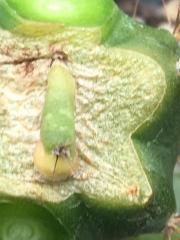
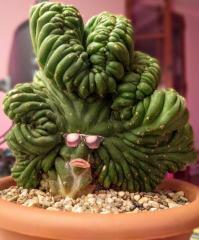


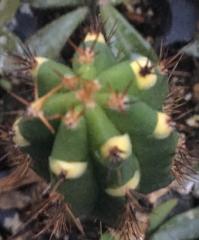
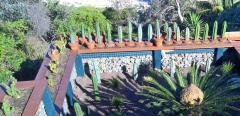

.thumb.jpg.34e44513d423f457544d01e1a256df78.jpg)




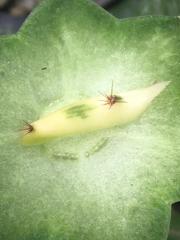
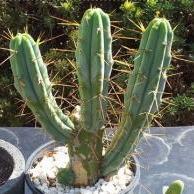


.thumb.jpg.306025a39ea44921ef8e8d54e050e8de.jpg)

.thumb.jpg.28b9eeec9d63bdc6a8488ef0b45c0300.jpg)

.thumb.jpg.071e2744255a36aec4c70664381ef8dd.jpg)






.thumb.jpg.7373868a2e3d5a7dcf66fa551092ebeb.jpg)































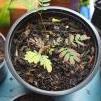


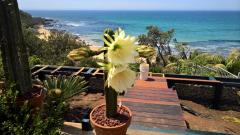
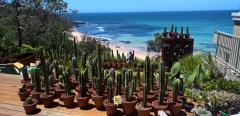

.thumb.jpg.e9d51d58690f106896c7c46ee7449d59.jpg)











